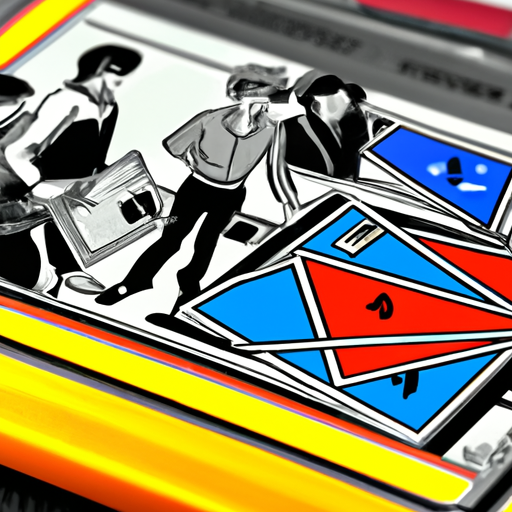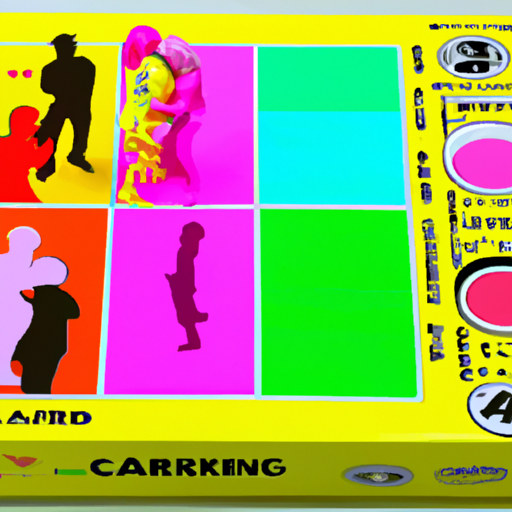
-
Table of Contents
- Package Design for Board Games: Fun and Eye-Catching
- The Power of Packaging
- Key Elements of Eye-Catching Package Design
- 1. Visual Appeal
- 2. Clear and Informative
- 3. Unique Shape and Structure
- 4. Interactive Elements
- Case Studies: Successful Package Designs
- 1. “Codenames”
- 2. “Dixit”
- 3. “Azul”
- Conclusion
Package Design for Board Games: Fun and Eye-Catching

Board games have been a popular form of entertainment for centuries, bringing people together and providing hours of fun. In today’s competitive market, the packaging of board games plays a crucial role in attracting potential buyers and standing out from the crowd. A well-designed package not only catches the eye but also conveys the essence of the game and creates a sense of excitement. In this article, we will explore the importance of package design for board games and discuss strategies to create fun and eye-catching packaging.
The Power of Packaging
When it comes to board games, packaging is more than just a protective covering. It serves as the first point of contact between the game and the consumer. A well-designed package can make a lasting impression and influence the purchasing decision. According to a study conducted by the Paper and Packaging Board, 72% of consumers agree that packaging design influences their purchasing choices.
Effective package design can communicate the theme, gameplay, and target audience of a board game. It should capture the essence of the game and create a sense of anticipation. A visually appealing package can attract attention on store shelves and online marketplaces, increasing the chances of a potential buyer exploring the game further.
Key Elements of Eye-Catching Package Design
Creating an eye-catching package design requires careful consideration of various elements. Let’s explore some key elements that can make a board game package stand out:
1. Visual Appeal
The visual appeal of a board game package is crucial in grabbing the attention of potential buyers. Bright colors, bold typography, and captivating illustrations can make a package visually appealing. The design should be unique and memorable, making it easy for consumers to recognize the game among others.
For example, the package design of the board game “Ticket to Ride” features a vibrant and colorful illustration of a train journey, instantly conveying the excitement and adventure of the game.
2. Clear and Informative
A well-designed package should clearly communicate the key information about the game. This includes the name of the game, a brief description, the number of players, and the recommended age range. Clear and concise information helps potential buyers quickly understand what the game is about and whether it aligns with their preferences.
For instance, the package design of the game “Catan” prominently displays the name of the game, along with a brief description of the gameplay and the number of players. This clarity helps consumers make informed decisions.
3. Unique Shape and Structure
While most board game packages are rectangular or square, incorporating a unique shape or structure can make a package stand out on store shelves. Unconventional shapes can create intrigue and curiosity, enticing potential buyers to pick up the game and explore further.
One example of a board game with a unique package design is “Pandemic.” The box is shaped like a medical kit, reflecting the theme of the game and immediately capturing attention.
4. Interactive Elements
Adding interactive elements to a board game package can create a memorable and engaging experience for potential buyers. This can include hidden compartments, puzzles, or even augmented reality features that allow consumers to interact with the package before purchasing.
The package design of the game “Exit: The Game” incorporates interactive elements by including a sealed envelope with clues and puzzles that players must solve to progress in the game. This interactive packaging adds an extra layer of excitement and intrigue.
Case Studies: Successful Package Designs
Let’s take a look at some successful board game package designs that have effectively captured the attention of consumers:
1. “Codenames”
The package design of “Codenames” is simple yet eye-catching. The box features a grid of words, representing the gameplay of the game. The use of contrasting colors and minimalistic design makes it visually appealing and easy to spot on store shelves.
2. “Dixit”
“Dixit” is known for its stunning and imaginative artwork, which is prominently displayed on the package. The use of vibrant colors and dreamlike illustrations creates a sense of wonder and intrigue, enticing potential buyers to explore the game further.
3. “Azul”
The package design of “Azul” is elegant and sophisticated. The use of a simple color palette and geometric patterns reflects the abstract nature of the game. The clean and minimalist design stands out among other games, attracting the attention of potential buyers.
Conclusion
Package design plays a crucial role in the success of board games. A well-designed package can attract attention, communicate the essence of the game, and create a sense of excitement. By incorporating visual appeal, clear and informative elements, unique shapes or structures, and interactive features, board game packages can stand out on store shelves and online marketplaces.
Remember, the package is the first point of contact between the game and the consumer. Investing time and effort into creating a fun and eye-catching package design can significantly impact the success of a board game.
